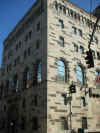 |
New York
Architecture Images-Upper East Side New York Academy Of Medicine |
|
architect |
|
|
location |
1216 Fifth Ave, At E103. |
|
date |
|
|
style |
|
|
construction |
|
|
type |
|
|
|
|
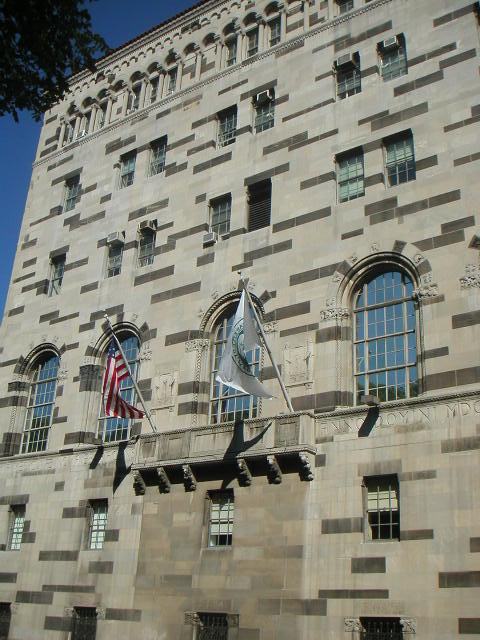 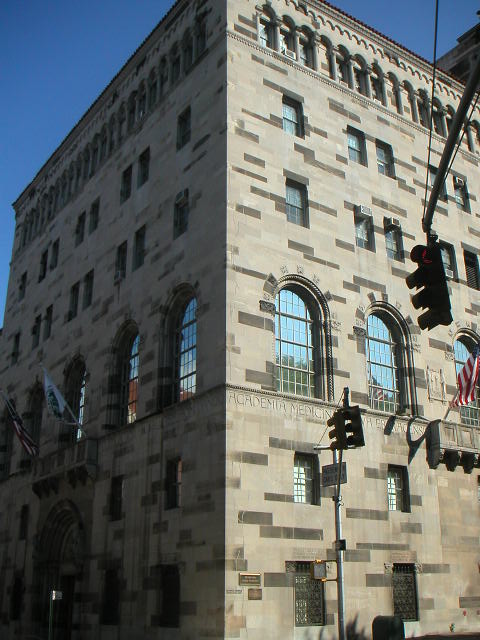 |
|
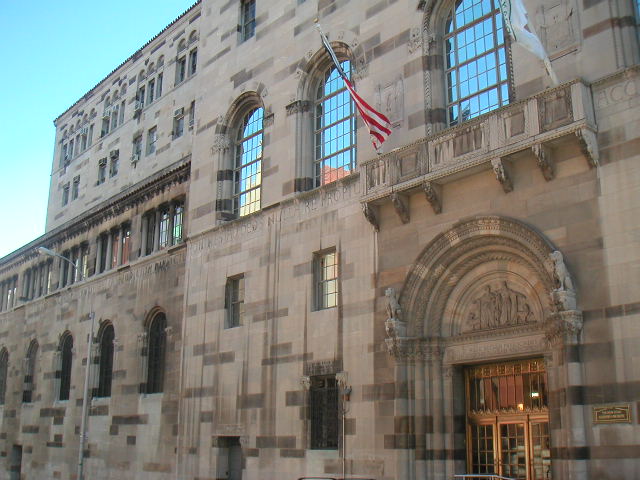 |
|
|
images |
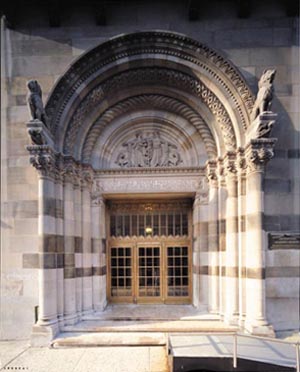 |
|
In 1847, a group of leading physicians founded The New York Academy of Medicine as a voice for the medical profession in the metropolitan area. The Academy immediately became involved in reform of both medical practice and public health. A major accomplishment of the early Fellows was the establishment of the Metropolitan Board of Health -- the first modern municipal public health authority in the United States. The Academy's three thousand Fellows now include not only doctors - but nurses, health care administrators, and professionals in all fields dedicated to maintaining and improving health. The Academy moved into its current home in 1926. Building on momentum developed during the previous decades, the Academy then developed into one of the country's most effective advocates of public health reform, as well as a major center for popular health education and for lectures and discussions of professional interest. A 1928 Academy report on maternal mortality was eventually responsible for a drastic regional reduction in death at childbirth, which set a precedent for the entire nation. For more than a hundred years, the Academy Library -- one of the three largest medical collections in the United States -- has been open not only to all physicians, but to anyone wishing to consult the professional medical literature. To this day, the Academy Library is the only medical library in the metropolitan area open to the general public. The medical and health care scene has changed greatly over the past century and a half, and The New York Academy of Medicine has changed with it. The Academy has recently reinvented itself into an organization largely devoted to addressing health problems of the urban poor. Its program staff includes leading researchers in health policy, urban epidemiology, and /initiatives/ph.shtml>public health; and its team of health educators has provided health education classes at more than seven hundred public schools, reaching over five hundred thousand pupils. The Academy Library has entered the information age with services to Academy staff and Fellows, corporate clients, smaller medical libraries, and -- as always -- the general public. At the same time, the Library takes seriously its role as the repository of the accumulated culture of health care and biomedical science, sponsoring research fellowships, academic programs, and public lectures on medical history and related fields. For more than a century and a half, The New York Academy of Medicine has been the leading non-governmental organization in the region concerned with matters of health care and health policy, consistently maintaining the highest standards of quality and impartiality. It is fair to say that virtually no endeavor related to health in New York City would have developed as it has, had The New York Academy of Medicine not been here. Understanding the factors that harm or safeguard health in urban areas can lead to the development of appropriate interventions and preventive measures that will make city-dwellers healthier. Across a wide spectrum of topics, The New York Academy of Medicine is investigating how the physical and social aspects of urban living influence residents’ health, and the public health interventions needed to improve urban health.The Academy’s urban health agenda focuses on pressing health issues including health disparities, access to care, asthma, HIV/AIDS, geriatric social work, substance abuse, health policy, urban disaster, mental health, health education training for public school teachers, handgun safety and improving community partnerships' ability to solve complex health problems. Research, education and advocacy are conducted in more than a dozen initiatives by over 100 advanced degree professionals, who routinely produce an impressive array of publications in respected peer-reviewed journals, including the Academy’s Journal of Urban Health. The Academy attracts renowned scholars, analysts, physical and social scientists, medical practitioners and community leaders from around the world in collaborations that often lead to conferences and symposia on a wide range of health issues. Recent conferences have explored the international obesity pandemic, the nursing shortage crisis, and the need for improved pediatric palliative care. The Academy education agenda also offers continuing medical education opportunities for professionals and training courses for the general public on accessing reliable health information on the Internet. The Academy maintains one of the world's largest privately owned medical libraries, which contains over 800,000 volumes, 1,000 current journal subscriptions, and more than 50,000 rare and important books, manuscripts, archives and artifacts dating back to 1700 BC. Founded in 1847, The New York Academy of Medicine is dedicated to enhancing the health of the public through research, education, policy analysis and advocacy, with a particular focus on disadvantaged urban populations. The Academy is a 501(c)(3) non-profit organization under the Internal Revenue Code. |
|
|
links |
http://www.nyam.org |